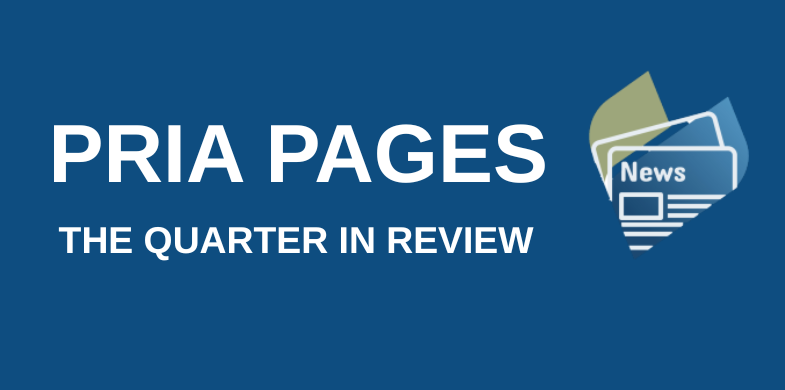Behind the Strategy: An Expert’s Perspective
U.S. Reimbursement Policy in Flux: What Medtech Needs to Know Now
Reflecting on some recent discussions with potential and current clients alike, I’m continually asked for my perspective on “how is the reimbursement landscape changing in the U.S. and will it impact market access for my technology.”
As a veteran reimbursement expert, I’ve tried hard not to answer with “it depends” (I can hear my fellow reimbursement colleagues chuckling). Joking aside, I can confidently say that one thing is clear: U.S. health policy is shifting, and MedTech companies can no longer afford to assume a status quo reimbursement environment. While the political landscape continues to evolve, recent CMS proposals focus on central key themes, related to payment equity, quality care, price transparency and reduction of fraud, waste and abuse. Let’s dig into these a little further and highlight key impacts which MedTech companies should consider as they plan reimbursement and commercialization strategies for their novel therapies.
1. Payment Equity: Site-Neutral Payment and Setting Efficiency. The 2026 Proposed Rules for the Outpatient Prospective Payment System (OPPS) and Medicare Physician Fee Schedule (MPFS) reinforce CMS's commitment to payment equity across care settings:
- Site-neutral payment policies aim to reduce reimbursement disparities between hospital outpatient departments (HOPDs) and ambulatory surgical centers (ASCs).
- CMS proposes alignment of clinical visit payments and outpatient procedures, aiming to eliminate financial incentives that drive care based on payment advantages rather than clinical need.
- Geographic adjustments and increased support for rural care suggest a focus on equitable access.
Takeaway: Medtech companies should prepare for a shift toward site-neutral payment models that prioritize clinical need over setting, impacting where and how technologies are utilized and reimbursed.
2. Quality Care: Emphasis on Measurable Outcomes and Equity. CMS is doubling down on quality accountability:
- The Hospital Outpatient Quality Reporting (OQR) Program is expanding with new measures on complications, follow-up, and social determinants.
- Expect more public reporting of outpatient outcomes and increased emphasis on equity-driven performance metrics.
Takeaway: Medtech companies should frame their value in terms of measurable quality improvement—especially in areas tied to CMS reporting.
3. Price Transparency: Enhanced Disclosure Requirements. Price transparency is no longer a soft nudge—it’s a regulatory requirement with enforcement teeth:
- CMS proposes higher penalties for hospitals not publishing standard charges and negotiated rates.
- New formatting and machine-readable file requirements are designed to improve usability for patients and CMS itself.
4. Fraud, Waste, and Abuse: Stricter Oversight of Utilization and Payment. Prior Authorization is coming to Medicare Fee For Service. CMS recently proposed the WISeR (Wasteful and Inappropriate Services Reduction) Model, which aims to:
- Focus health care spending on services that will improve patient well-being
- Apply commercial payer prior authorization processes that may be faster, easier and more accurate.
- Increase transparency of existing Medicare coverage policy.
- De-incentivize and reduce use of medically unnecessary care
The initial model becomes effective Jan. 1, 2026, and imposes prior authorization requirements for select services, subject to an existing NCD (national coverage decision) or LCD (local coverage decision) in the clinical areas of skin substitutes/ tissue substitutes, electrical nerve stimulation, knee arthroscopy and cervical fusion, amongst others, confined to six states.
Key Takeaways
- Payment Equity Is Reshaping the Economics of Site-of-Care
With CMS advancing site-neutral payment policies, the reimbursement differential between HOPDs and ASCs is narrowing. Medtech companies need to reassess their go-to-market and adoption strategies, especially for technologies heavily utilized in higher-cost hospital settings.
- Accountability Is the New Value Standard
CMS's push for expanded quality reporting and equity-driven metrics means MedTech must go beyond efficacy claims. Technologies that demonstrate real-world outcome improvements and address disparities in care will have a strategic advantage.
- Prior Authorization Is Coming for Fee-For-Service—Via WISeR
The WISeR model introduces commercial-style prior authorization to traditional Medicare for certain services in six states, starting in 2026. This signals a significant shift in how utilization management will be handled and reinforces CMS’s emphasis on reducing low-value care
Final Thoughts
In reimbursement, the only constant is change—and the best answer to most policy questions still remains: “It depends.” So be ready, be informed, plan early… and maybe keep a reimbursement expert (or the PRIA Team of experts) on speed dial.
Our team of reimbursement and market access experts are here to guide innovators navigating the path to commercial success -- how can we help you?

Tonya Dowd, MPH
Executive Vice President,Reimbursement, Health Economics,
Market Access and Corporate Development
Click the Icon below to share this with your network














